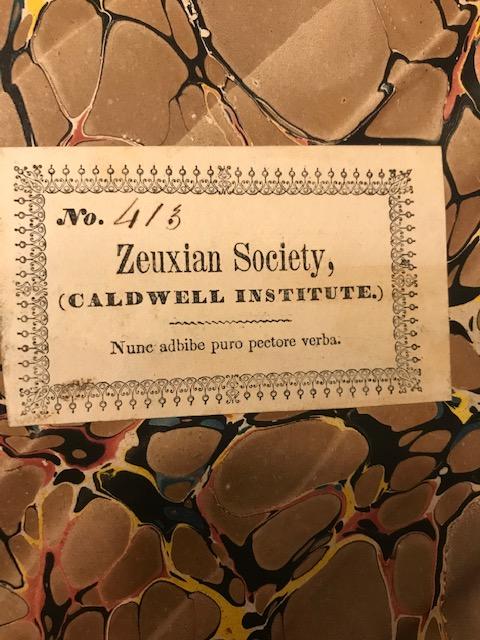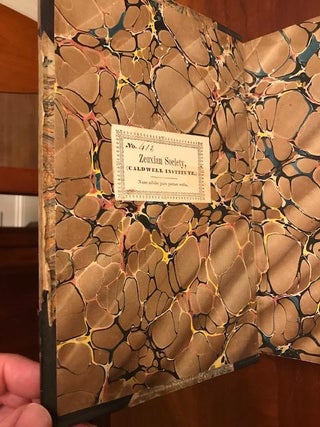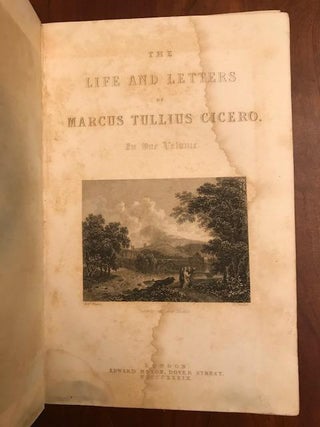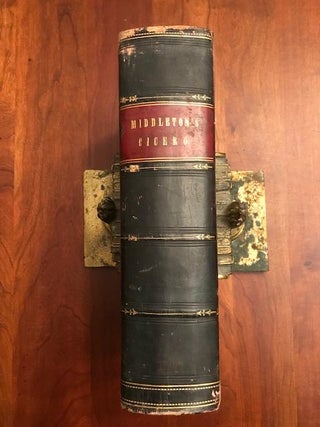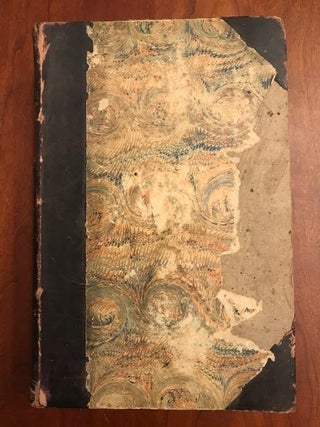The Life and Letters of Marcus Tullius Cicero. The Caldwell Institute (Guilford County, North Carolina) Provenance.
London: Edward Moxon, 1840. 828 + [4] pp. index & adverts. Dark brown half-calf over marbled paper, with red leather spine label, titled in gilt, affixed to spine; marbled endpapers. Engraved title page by William Finden after Richard Wilson's fabulous landscape 'Cicero at his Villa'. Illustrated with tissue-guarded frontispiece bust of Cicero, engraved by William Finden. Contains Cicero's letters to Atticus & friends, translated by William Heberden and William Melmoth, respectively, as well as a biography by Conyers Middleton. Text in two columns & ruled. Zeuxian Society (Caldwell Institute) bookplate to front pastedown, with the motto nunc adbibe puro pectore verba (Hor. Ep. 1.2.67 'now drink up words with a bright, undefiled mind'). A very serviceable copy. Good to very good. Heavy rubbing & edgewear, with light wear to joints and some loss to marbled paper about fore-edge. Mild dampstaining to title pages, with some light foxing. Binding square & sound, text otherwise clean & bright.
The Caldwell Institute, originally located in Guilford County, grew out of the determined effort of the Presbyterian Church to establish a school providing a classical education imbued with Christian principles. In 1833 a committee appointed by the Orange Presbytery selected Greensboro as the site for the proposed institution, but not until 21 Jan. 1837 did the General Assembly ratify the charter of incorporation for the Caldwell Institute. The name honored Joseph Caldwell (1773-1835), the first president of the University of North Carolina, whose distinguished career in education spanned more than four decades.
The Caldwell Institute's school year consisted of two sessions of five months each, with one-month vacations in April and August that coincided with the planting and harvesting seasons. The trustees chose not to construct a dormitory on campus because they believed that living in homes under family restraints would offer fewer temptations to students. Everyone attending the institute was required to attend public worship on Sundays and to spend time Sunday afternoon reciting from the Bible and Westminster Catechism.
The Caldwell Institute flourished for eight years, and, according to local tradition, attracted students from surrounding states as well as North Carolina. An outbreak of typhoid fever in Greensboro in 1845 prompted the trustees to move the school to Hillsborough, where classes were held in the recently repaired and enlarged Hillsborough Academy building. The Caldwell Institute, under the continuing leadership of Alexander Wilson, thrived for three years, reaching a peak enrollment of 100 in 1848. The next year attendance dropped back to 68, and in 1850 the trustees voted to discontinue the school. Item #100060
Price: $350.00

